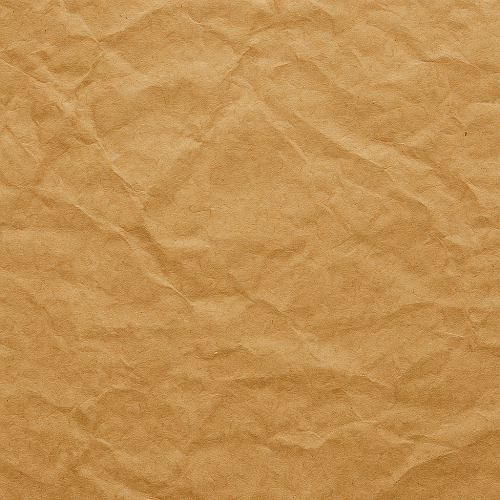The Science and Sustainability of Food Packaging Paper: Materials, Technologies, and Future Innovations
Food packaging paper has evolved from a simple wrapping medium to a sophisticated, engineered material that serves as both a functional and sustainable solution for modern food systems. As global consumers demand eco-friendly alternatives to plastics, food packaging paper has become a cornerstone of the circular economy. Its development involves complex considerations—ranging from fiber sourcing, barrier coatings, and food safety compliance, to recyclability and biodegradability.
1. Material Composition and Fiber Sourcing
At its core, food packaging paper is primarily made from cellulose fibers derived from wood pulp, agricultural residues, or recycled paper. The quality and origin of these fibers directly influence mechanical strength, porosity, and surface properties.
Virgin vs. Recycled Fiber: Virgin fibers, often from softwood species like spruce or pine, provide long, strong fibers that enhance tensile strength and tear resistance. Recycled fibers, while more sustainable, undergo mechanical degradation and contamination during reuse, often requiring deinking, cleaning, and chemical stabilization before reprocessing.
Bleached vs. Unbleached Paper: Bleached kraft paper offers a clean, white appearance desirable for food branding but may involve chlorine-based chemicals, which are now being replaced by TCF (Totally Chlorine Free) or ECF (Elemental Chlorine Free) bleaching processes. Unbleached kraft paper, often brown, retains higher mechanical integrity and is preferred in natural or eco-themed packaging.
Alternative Fibers: Rapidly renewable resources like sugarcane bagasse, bamboo, wheat straw, and hemp are emerging as sustainable fiber sources. They reduce pressure on forest resources while offering comparable fiber morphology and strength properties.
2. Functional Properties and Performance Requirements
Food packaging paper must meet diverse functional requirements depending on the food type, shelf-life expectations, and distribution environments.
These include:
- Mechanical Strength: Tensile strength, burst resistance, and tear strength are essential for preventing rupture during filling, sealing, and handling. The refining process, fiber bonding, and basis weight (typically 40–120 g/m²) are optimized for these parameters.
- Barrier Properties: Paper inherently has poor resistance to moisture, grease, oxygen, and vapor transmission—critical barriers for food preservation.
Coatings and surface treatments are necessary:
- PE (Polyethylene) and PP (Polypropylene) coatings for moisture and grease barriers.
- Wax or paraffin coatings for bakery or confectionery wraps.
- Biodegradable coatings such as PLA (polylactic acid), PHA, and water-based dispersions for compostable alternatives.
- Aluminum or metallized layers in multilayer laminates for oxygen barrier enhancement.
Printability: Smoothness, brightness, and ink absorbency control are crucial for brand visibility. Surface sizing agents and calendering improve print performance without compromising recyclability.
3. Manufacturing Process and Technologies
The production of food packaging paper involves multiple sophisticated stages designed to balance performance, safety, and sustainability:
- Pulping and Refining: Raw materials undergo chemical or mechanical pulping to separate cellulose fibers. Refining adjusts fiber fibrillation and bonding potential, influencing final paper strength.
- Papermaking and Forming: The pulp slurry is distributed on a moving wire mesh in a paper machine, where water is drained, and the wet web is pressed and dried through steam-heated cylinders.
- Surface Treatment: Coating, sizing, and lamination steps are applied using blade, curtain, or extrusion coaters. The choice depends on the intended barrier performance and compatibility with recycling systems.
- Converting: The paper is slit, printed, and formed into final packaging formats—bags, wraps, pouches, trays, or cups—often using heat-sealing or adhesive bonding technologies.
Advanced digital control systems now monitor moisture profiles, caliper uniformity, and surface smoothness in real-time, enhancing product consistency and waste reduction.
4. Food Safety and Regulatory Compliance
Food packaging paper must adhere to stringent international standards to ensure that no harmful substances migrate into food.
These include:
- FDA (21 CFR Parts 170–199) in the United States.
- EU Framework Regulation (EC) No. 1935/2004 and related directives.
- ISO 22000 and BRCGS Packaging Standards for manufacturing hygiene and traceability.
Key safety considerations involve:
- Migration limits for mineral oils, plasticizers, and fluorinated grease-resistant coatings.
- Use of food-grade inks, adhesives, and binders.
- Compliance testing for organoleptic neutrality (no off-odor or taste transfer).
The growing movement toward PFAS-free food papers (replacing per- and polyfluoroalkyl substances used for oil resistance) represents a significant step in both environmental and human health protection.
5. Sustainability and Circular Economy Considerations
Paper packaging is inherently renewable and recyclable, but its sustainability depends on several lifecycle factors:
- Recyclability: Paper fibers can typically be recycled up to 5–7 times. Coatings and laminates can complicate this process; thus, development of repulpable coatings and water-dispersible adhesives is critical.
- Compostability and Biodegradability: Compostable barrier coatings (PLA, starch-based, PVOH) and uncoated papers can degrade naturally within industrial composting facilities, contributing to waste reduction goals.
- Carbon Footprint: The carbon impact depends on forestry management, energy sources (fossil vs. renewable), and transportation. Certified sourcing under FSC or PEFC standards ensures responsible fiber procurement.
- Life Cycle Assessment (LCA): Quantitative LCA models evaluate environmental burdens from cradle to grave, guiding manufacturers toward lower-emission production technologies and end-of-life optimization.
6. Current Innovations and Future Directions
The next generation of food packaging paper is being shaped by cross-disciplinary innovations combining material science, nanotechnology, and digital manufacturing:
- Bio-based Coatings: Replacing petroleum-derived plastics with chitosan, lignin, and cellulose nanofiber (CNF) coatings for barrier enhancement.
- Smart Packaging: Integrating sensors and printed electronics into paper to monitor freshness, temperature, and contamination.
- Water-Based Barrier Systems: New formulations using acrylic, polyurethane dispersions, and biopolymers eliminate the need for extrusion coatings.
- High-Barrier Mono-Materials: Research aims to develop 100% paper-based packaging capable of replacing complex laminates while maintaining shelf life.
- Digital Traceability: QR-coded packaging linked to blockchain systems ensures supply chain transparency and compliance verification.
7. Technical and Industrial Challenges
Despite its advantages, several challenges remain in scaling paper-based packaging as a universal plastic alternative:
- Achieving high moisture and grease resistance without compromising recyclability.
- Developing high-speed sealing and forming techniques compatible with paper’s lower flexibility compared to films.
- Balancing cost and performance, especially in replacing cheap petroleum-based coatings.
- Overcoming shelf-life limitations for moisture-sensitive or high-fat foods.
- Ensuring global infrastructure for composting and recycling hybrid materials.
Food packaging paper stands at the intersection of material science, food safety, and sustainability. Its evolution reflects humanity’s broader pursuit of balance—between technological progress and environmental responsibility.








































